Maritime UK Solent - Coastal Powerhouse Summit 2025 Event - Part 2
Decarbonisation and Innovation at the core of the inaugural Maritime UK Conference for the Solent Region
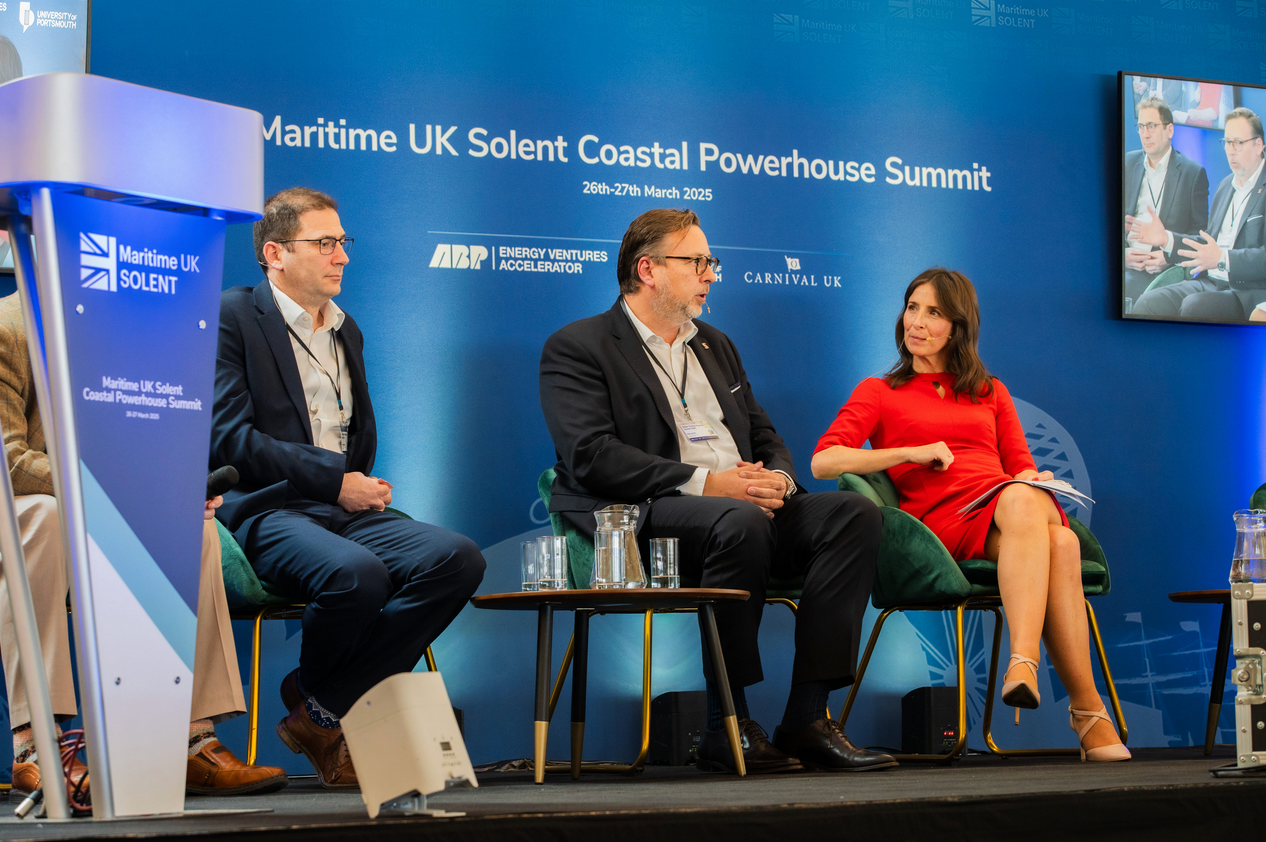
Part 1 covered the general scope of the event with some wider context to the value and strategic importance of the Maritime sector, both locally and nationally.
Check back in via the link below for details on the new UK strategy for decarbonising Maritime and the IMO future fuel strategy, plus more on the challenges of grid connections for Onshore Power Supply.
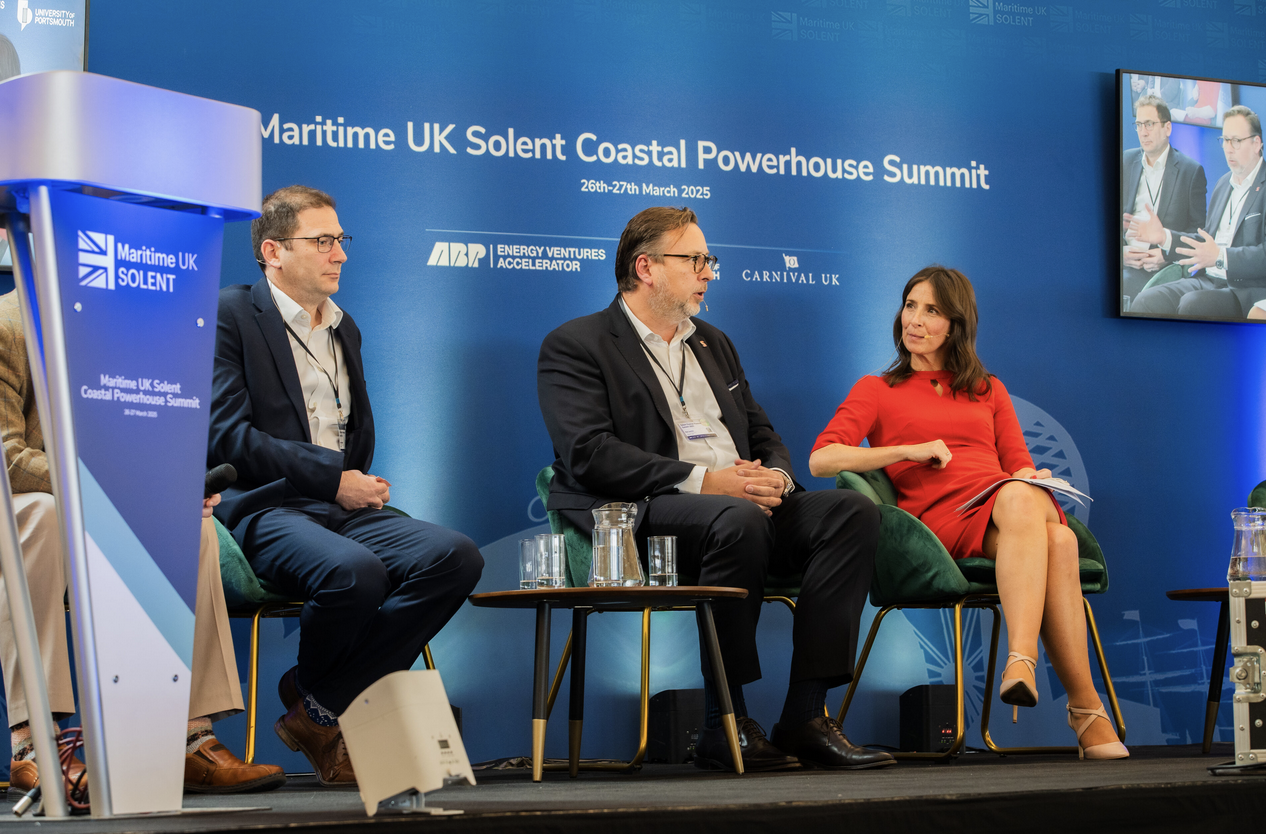
Part 1 - Future Fuels and Shorepower
There were several startup pitch sessions as part of the corporate venture programme, ABP Energy Ventures Accelerator, supported and delivered by Plug and Play UK. Before we dive into that, a note on Maritime Security, which is becoming ever more relevant in our national strategic thinking...
Maritime Security 🔒
A very interesting Keynote from Cdre Marcel Rosenberg ADC RN – Naval Base Commander (Portsmouth).
Never in recent times has our focus been dialled in on the security of supply, sovereign resources and defence - 96% of UK global trade is through maritime and port infrastructure. It is critical.
It's not often you get to hear directly from such an authority on Naval security. He was also conscious to recognise the need to 'open up' more direct interaction between SME's and the MoD, shortening innovation timelines and access to new technology.
The MoD £2.6bn R&D budget [2023/24], which we can expect a significant uplift in for obvious reasons, alongside a need to deliver their strategic target of 80% autonomy within 10 years - that is an epic challenge that SME agility can help accelerate.
That call for innovation and greater accessibility is being facilitated through the MoD innovation hub in Portsmouth and some of the corporate venture programmes from the likes of QinetiQ and BAE Systems Maritime Services, who joined the panel discussion.
Deregulation and enabling SMEs to access the innovation programme, supply chains and approvals process more easily will be a key requirement to deliver this strategic push. Additionally, a communications and outreach strategy is needed to encourage SMEs to explore to opportunity - if the Navy wants to foster agility and collaboration with the private sector, it needs to open the doors to innovators and reduce friction.
Innovation Funding 💸
The Maritime sector still lags behind its counterparts in UK Automotive and Aviation, the Clean Maritime Demonstration Competition programme has accessed approximately £200m to date [Round 6], in comparison, around £3bn was allocated in the 2024 Autumn Budget for Automotive & Aviation.
Maritime is the poor relation, and considering its impact on UK port cities, local emissions, health impacts, global trade and jobs, it feels like a missed opportunity from the government for growth.
The sector isn't standing still with cap in hand; the likes of ABP and DP World have picked up the challenge and are pushing forward with innovation programmes and business model strategies to reduce emissions.
Port Sustainability ♻️
The 'Modal Shift' programme from DP World has been a successful high-impact programme, incentivising container movements from Road to Rail. A small levy on all containerised traffic creates a model to transition to Rail while reducing Scope 3 emissions:
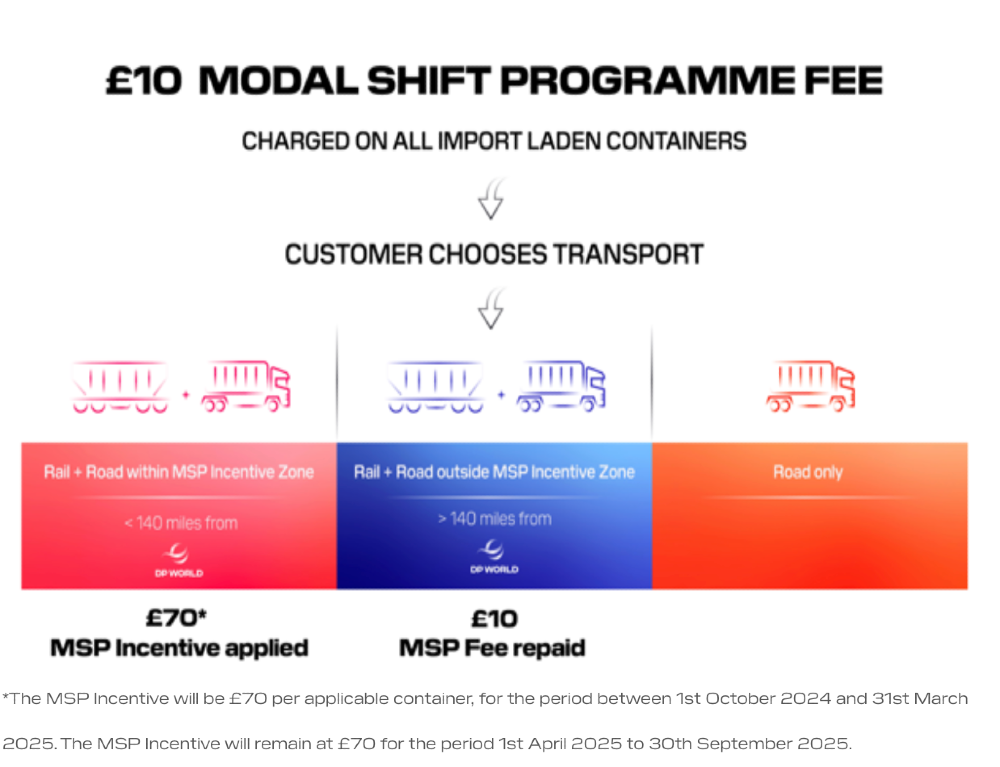
The impact has been significant - approximately 100,000 containers have been shifted from Road to Rail, saving >25,000t CO2 and >70,000 truck journeys on the congested southern road network leading into Southampton city and docks.
The target is to hit 40% of container freight by Rail, originally just 20%. That target has been facilitated by investment in the port rail infrastructure.
The newly opened [March 2024] Solent Rail Terminal investment of £17.5 million in partnership between Associated British Ports (ABP) and Solent Stevedores. Alistar Welch, Director at ABP:
The 18-acre facility expands the intermodal rail transport site to include empty container handling, storage, maintenance, and repair, with simultaneous train arrival and departures increasing the terminal’s efficiency and extending the rail loading pad by 130m. The larger intermodal site, including container storage with full maintenance and repair facilities, offers a 71% increase in daily services with a 125% increase in the number of containers handled.
A strong strategy that integrates infrastructure development and business model adaptation - positive impact originates from collaboration and systems thinking.
Startup Pitches 🚀
I enjoy these, as you know - great fun to see what can be pitched in 10 mins and a handful of slides!
Always a test for the presenter - how to pitch the technology itself, the level of depth for the audience, and clarity to the proposition in solving an identifiable problem.
Can it deliver what is claimed? Will it have an overall positive impact? Is there a scalable business model behind it that interests investors?
Let's have a look...🤔
Seabound 🌊
Starting with a Carbon Capture solution is always 'interesting' - as you will have seen from previous content, CCS / DAC are not in my list of preferred technologies for best use case of resources, technology and public investment purposes.
That said, shipping has major carbon emission issues to address through the transition period to the wider availability of predominantly battery, methanol and bio-fuel vessels of the future.
In the meantime, if it works, is economically viable, practical, and its LCA stacks up, with private venture funding, then it could potentially be a useful transition application.
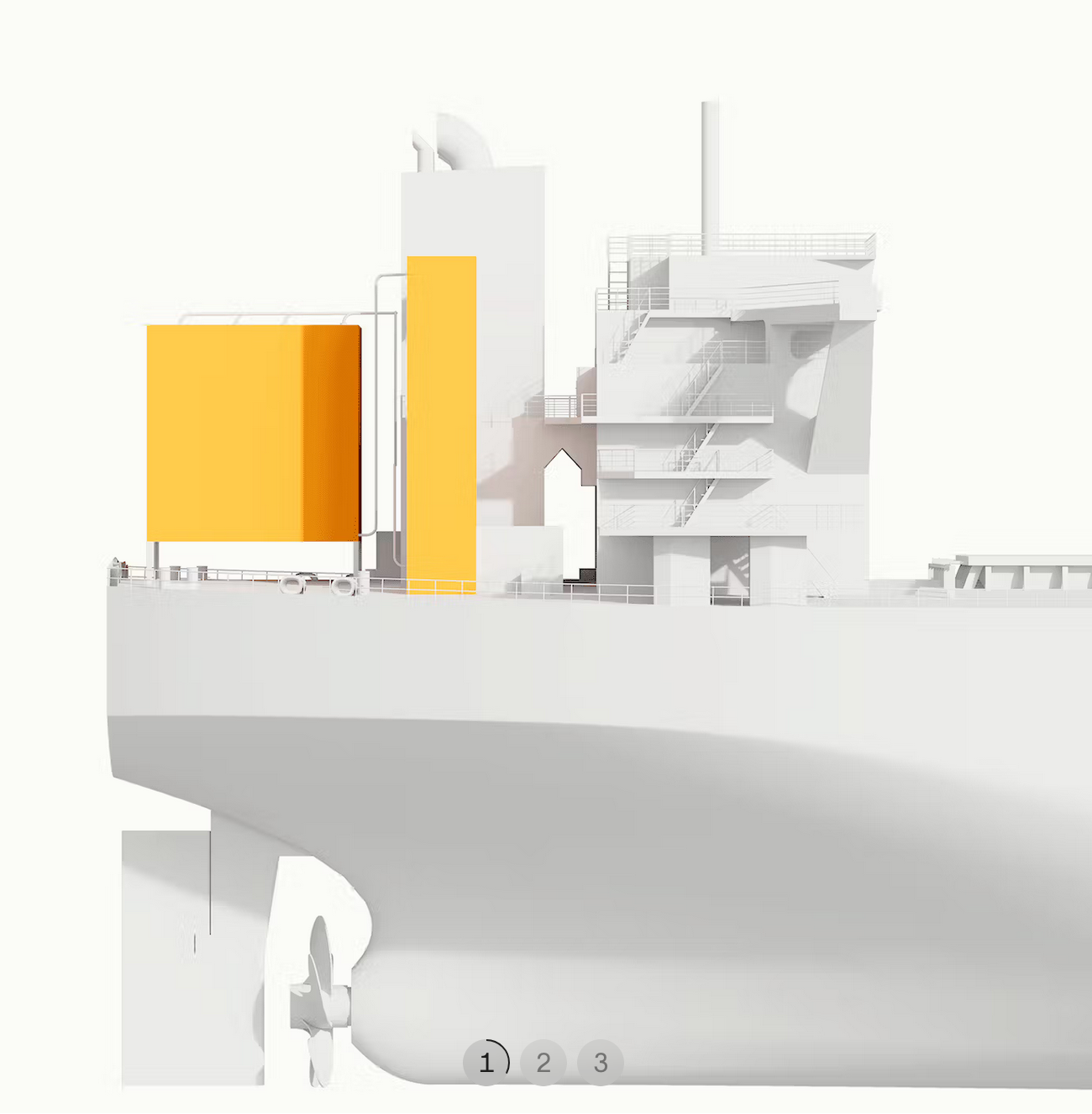
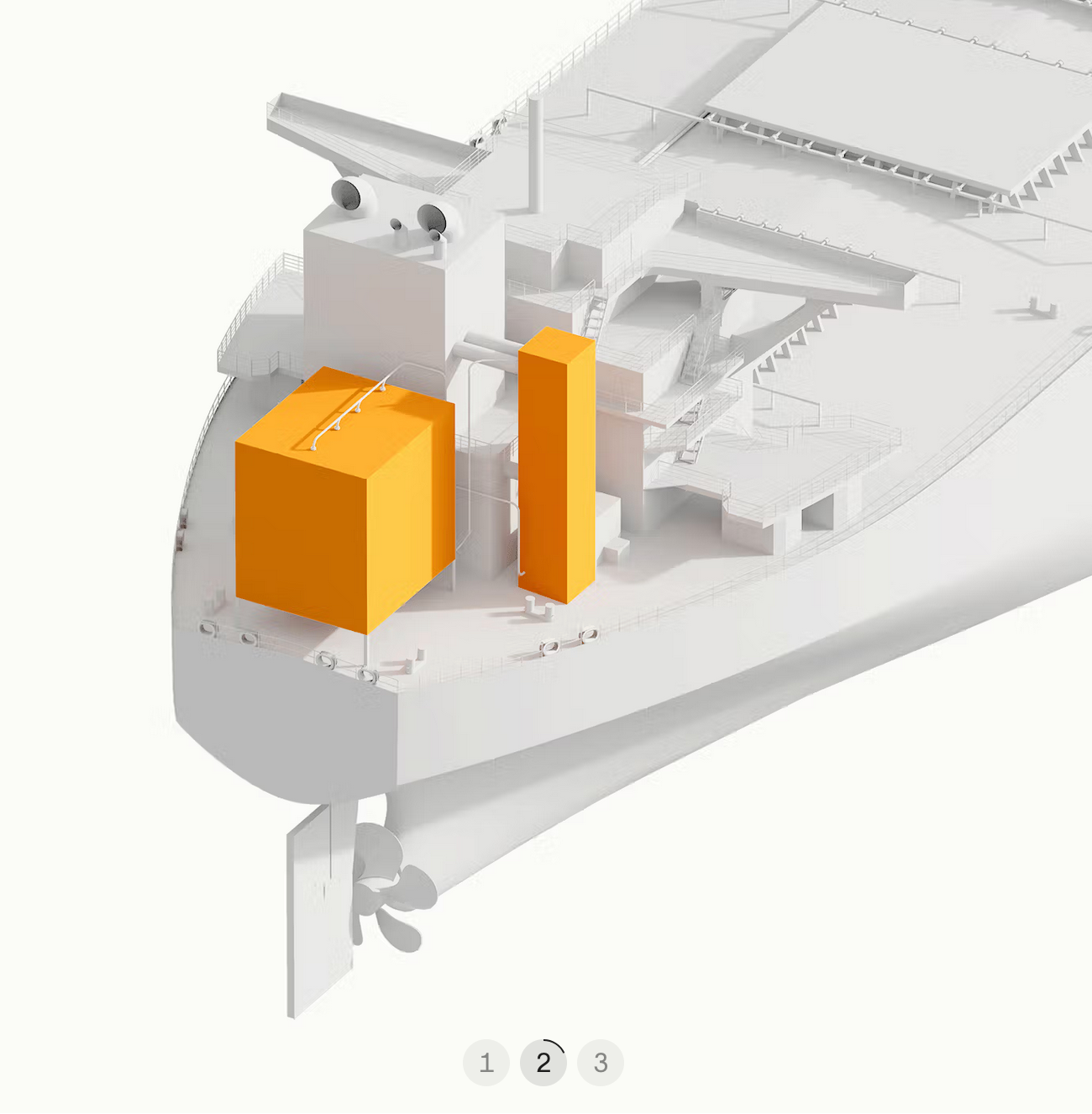
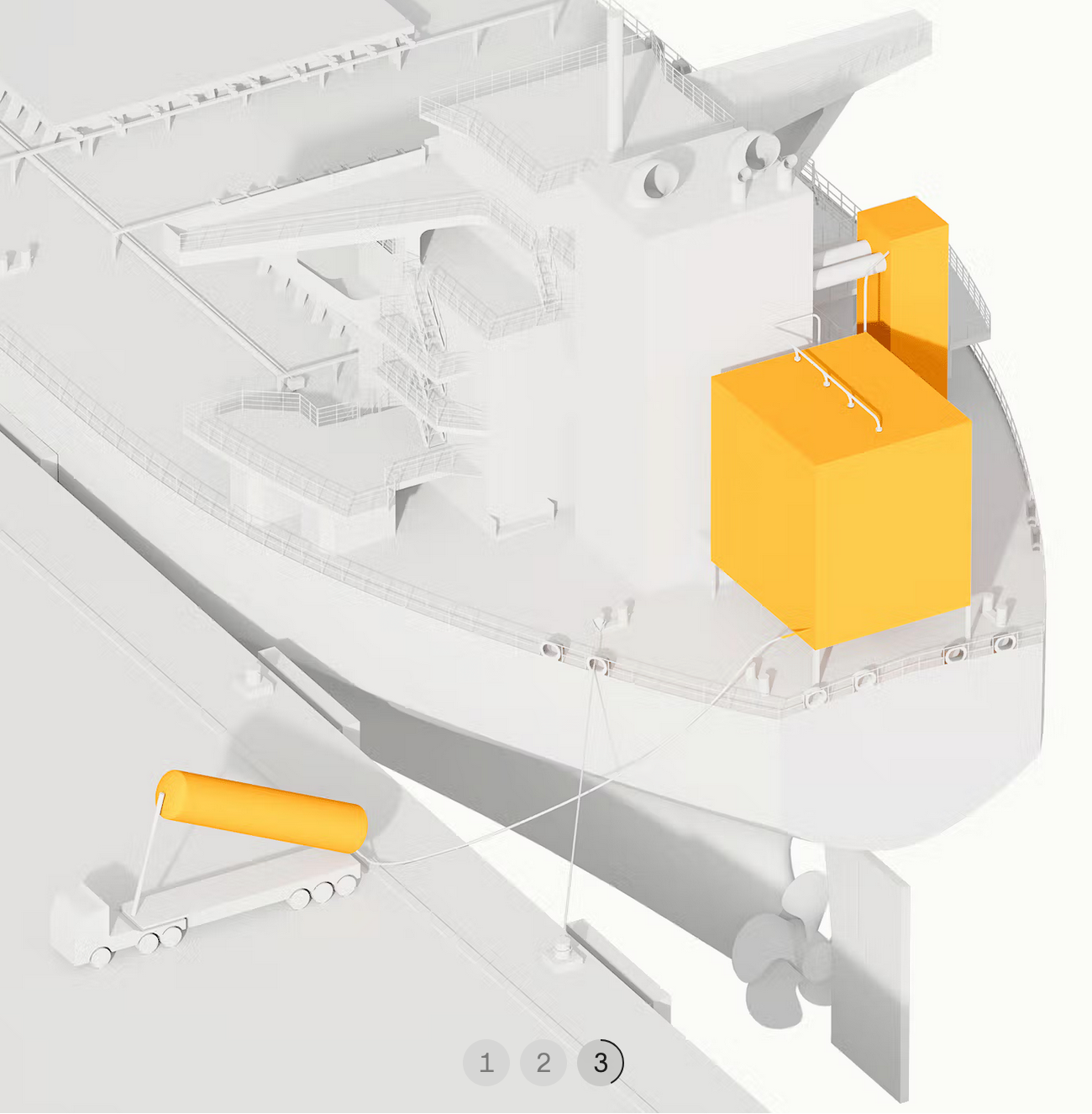
Image Credit: Seabound 3 Step Process
Low capex, installed to the flue system with CO2 captured in an exothermic process with waste heat recovery - CO2 is stored in limestone in containerised units ready for off-take in-port.
Prototype reached 80% efficiency with 2 commercial demonstrators on the water in 2025. It will be interesting to track progress - one of the big challenges will be to overcome volumetric storage and the available space on deck.
I borrowed this from one of my connections on LinkedIn, often used in the wider context of CCS, but it serves a purpose here and highlights the inherent challenge:
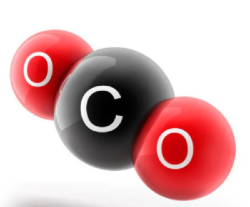
Every 1 tonne of fossil fuel burned produces 2 - 3 tonnes of carbon dioxide (depending on fuel) as two oxygen atoms (atomic weight 16) bond to each carbon atom (atomic weight 12)....how and where will the extra tonnes of carbon dioxide be stored?
Read more on Seabound.
XFuel ⛽
Low-emission drop-in fuel is the holy grail for maritime shipping - the transition demands solutions that make use of existing resources and technologies.
Securing volumes of feedstock for future bio-fuels is going to be a challenge, especially against potential demands of the aviation sector, which will likely always pay a higher price to secure limited volumes.
In this case, XFuel are using waste stream inputs that would otherwise be incinerated - lignocellulosic and lubricant oil waste, and biomass waste, among others - all low-cost and abundant.
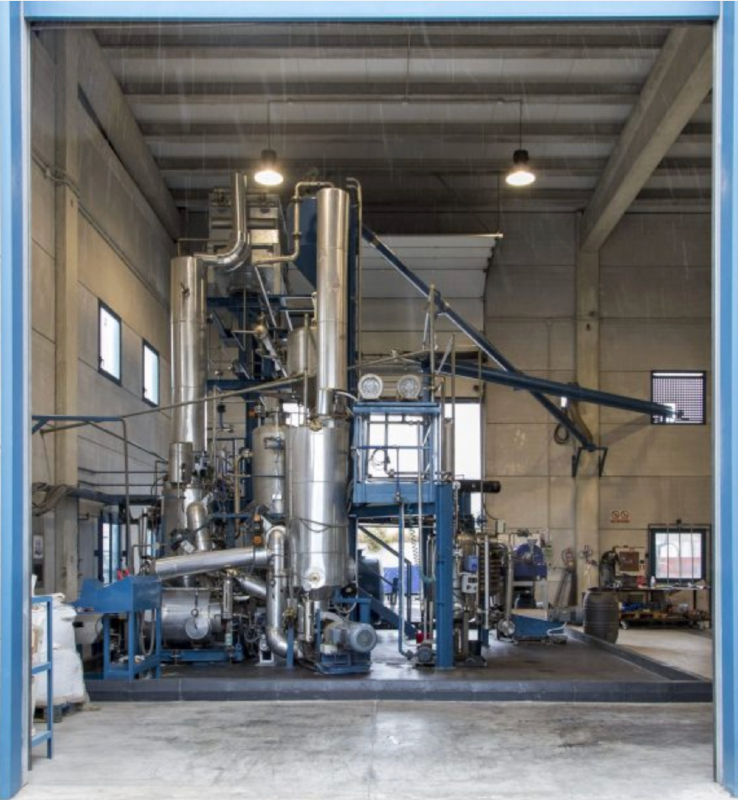
Tech 1 - Chemical liquid refining (CLR) - refine and crack hydrocarbon liquids and residues into ultra-clean drop-in transport fuels for marine, road and aviation sectors.
Tech 2 - Mechanical Carbon Conversion (MECC), which co-processes lignocellulosic waste biomass and waste oils to produce low-carbon transport fuels and biochar.
Their solutions are International Sustainability and Carbon Certification (ISCC) EU and ISCC Plus, for certified production of low and zero-carbon fuels with supply chain traceability and quantifiable GHG savings.
Small decentralised modular plants lend themselves to local port infrastructure adoption, while utilising local waste stream supply chains. It's an interesting proposition that's helped them close approximately €15m to date, including €7.7m from the EIC funding competition.
With multiple market pathways in Transport and shipping off-takers ready to go, they look poised for growth.
Read more on XFuel.
Armada Tech 🫧
We have seen from Newsletter 020 that there are huge opportunities through efficiencies and the introduction of new technologies to optimise vessel performance.
Passive Air Lubrication has been around for some time - essentially a carpet of bubbles to reduce the drag of the hull through the water, improving efficiency and reducing fuel consumption. Typically, they use continuous air compressors to create the air bed.
Challenges with these systems include efficiency in changing sea-states, the power demand of multiple compressor systems and the additional space, plant and systems requirements.
New design, technology and control systems bring opportunities for this solution to evolve - their Passive Air Lubrication System, [PALS] delivers:
▶️ Passive smart system - utilises hull movement for a water/air mix
▶️ No compressors - intermittent boost pumps for reduced power and plant
▶️ Venturi design - optimised bed with hydrostatic pressure equilibrium
▶️ Control system with ML - speed, depth, weather, draft optimisation
They are part of the Retrofit55 programme, an HorizonEU Funded Project that offers an advanced web-based Decision Support System (DSS), featuring emission retrofitting solutions selected and optimised through modelling and configuration tools, all accessible for implementation across a European partner network.
With fuel reductions through PALS around 10-12%, there is a huge opportunity for emission and fuel cost reduction for owner/operators.
Video of their first PALS installation earlier in 2024 on a very large vessel, the Kool Husky!
Video Credit: Armada Tech
Stax Engineering 🏗️
Great traction on this tech over in California, which, as we know, has very strong state legislation for air pollution - could be interesting...
Essentially, it's a floating barge with a processing plant onboard that vacuums up exhaust emissions directly and then processes them to remove NOx, PM10, PM2.5, diesel particulate matter (DPM), and reactive organic gases (ROG).
It looks like quite the piece of capex infrastructure to deploy, although I don't have an indicative cost per barge - it's currently servicing 6 ports across California.
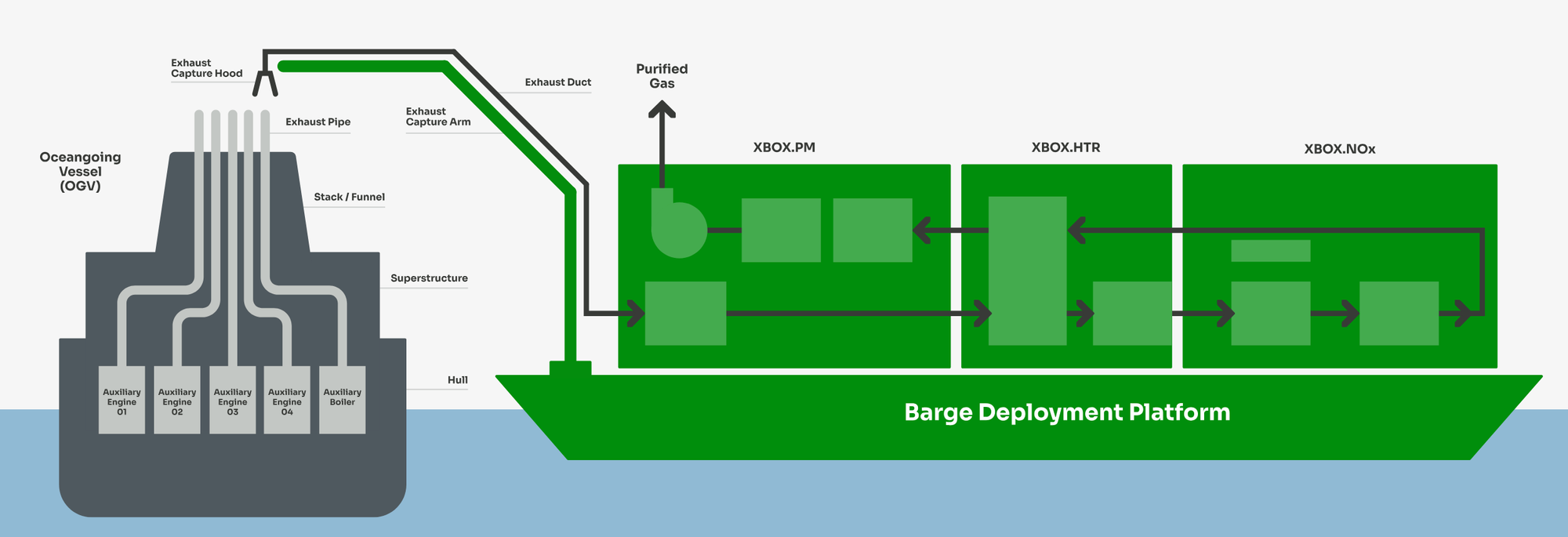
The details will count on this one - the purified gas is an undefined mixture of CO2 and water. How much CO2 is unknown, although they are compliant with CARB - one of my engineering colleagues will have to unpick the details on that specification and emissions data.
Interesting partnership announcement from ABP on the day - they have paired up and partnered Stax and Seabound to deploy in trials on vessels in Southampton. Perhaps the calcium looping limestone process, and the technologies from the Stax process can be combined to create a holistic solution - time will tell.
More on Stax Engineering.
Purifire Energy ⛽
More fuels! Waste water into green hydrogen and bio-methanol. With no compressors or electrolysers needed in their process, it sounds intriguing with a path to scalable economics, potentially.
They picked up a $3.5m seed round in late 2024.
Unfortunately, I can't tell you much more at this stage, the pitch and website don't reveal any technical details - perhaps we can revisit this in the future.
We do know the size of the prize via the website:
Methanol is a clear liquid chemical used in thousands of everyday products, including plastics, paints, cosmetics, fuels and energy production. Today >98% of 110 million tons of methanol produced is considered ‘dirty’ as it is derived from coal or natural gas.
More on Purifire Energy.
GT Wings 🌬️
We featured them in Newsletter 020 as part of the Wind-Assisted Ship Propulsion theme for that week - head over there to take a further look at their solution and a couple of notable competitors in this rapidly growing market.
This market looks ready for take-off. 🚀
More on GT Wings.
Ecomar Propulsion ⚡+⛽
They have focused on electrification and hybrid hydrogen propulsion. Targeting inland commercial vessels to 300dwt, with hydrogen fuel cells to hybrid with batteries. This does involve H2 supply chain challenges, including electrolysers and BoP, renewable generation for green hydrogen sourcing, high-pressure storage tanks on the vessel and other considerations.
If you can't deal with all that capex infrastructure, it's less than useful for emissions, fossil-derived Blue Hydrogen.
Meanwhile, Li-ion costs continue to fall exponentially, 70% in the last 3 years, and now both CATL and BYD are launching scale sodium-ion batteries with energy density heading towards lithium, plus abundant raw materials and cost benefit. More news on that development here.
With multi-billion-dollar giga-factories in build, I would expect that battery technology and electrification will ultimately win out.
More on Ecomar.
RAD Propulsion ⚡
Electric drives are a very promising market, there are A LOT of small craft out there. They are delivering power console drop-in systems at 21 kWh or 42 kWh and can offer power scope up to 2 40 kWh, with 400v architecture for fast charge infrastructure. The outboard RAD40, a 40kW unit equivalent to a 60hp traditional outboard.
They also have capability in robotics and technology solutions, for uncrewed surface vessels (USV) and maritime autonomous surface ships (MASS) and extended their exploratory projects to new concepts such as vessel-2-grid charging, following the path of vehicle-2-grid charging that we will see commercialised in the next few years.
One identified market segment, with feasibility and pilots ongoing, could be a revolutionary site on UK waterways - the 'last blue mile' concept. The UK delivery market is estimated at >£28bn by 2030 - decarbonising local delivery, getting vehicles off the road during the freight electrification transition, and better utilising our waterways for 'the last mile' is a compelling narrative.
Autonomous delivery of up to 3x Euro Pallets per vessel.
More on RAD Propulsion.
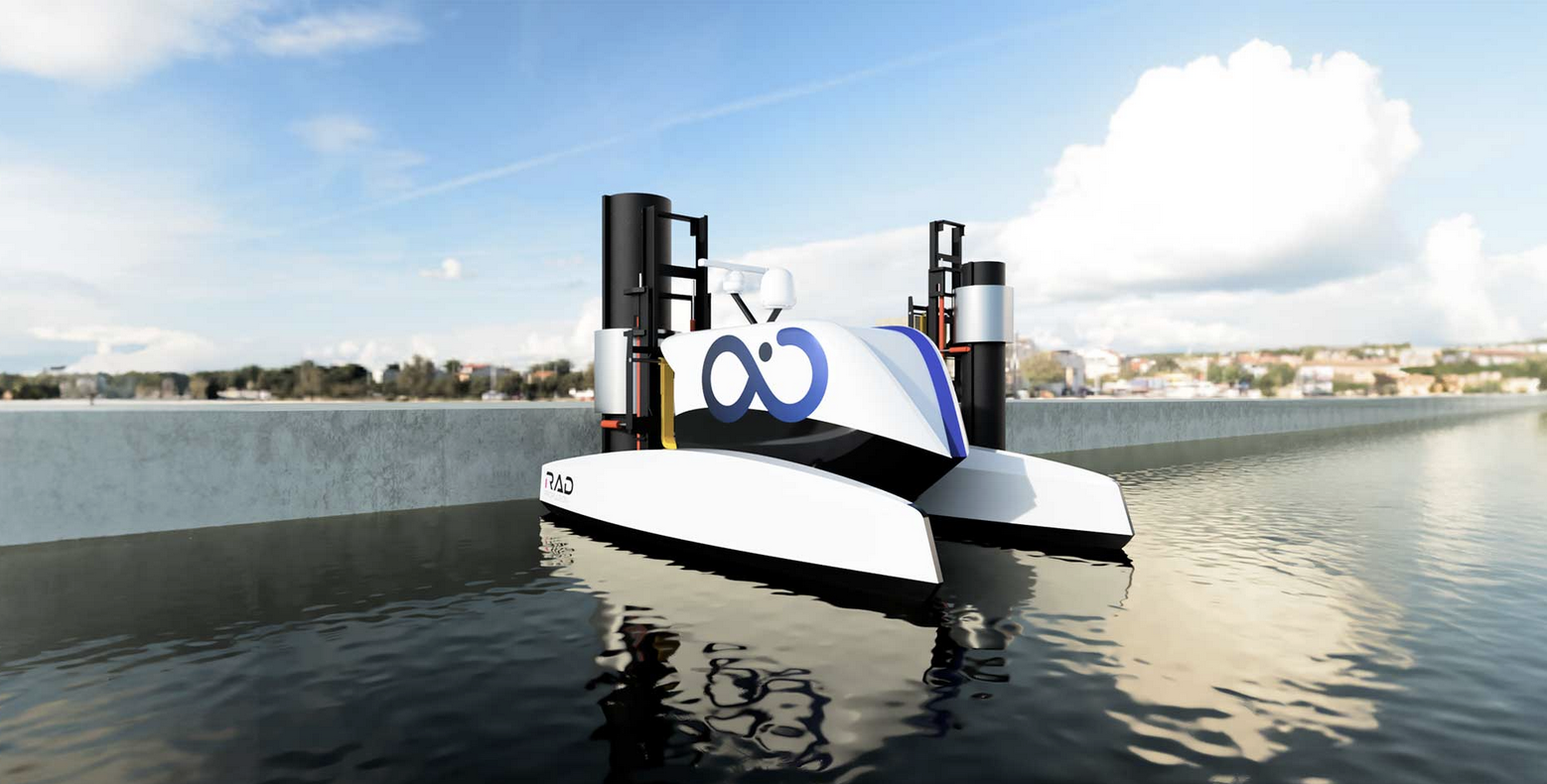
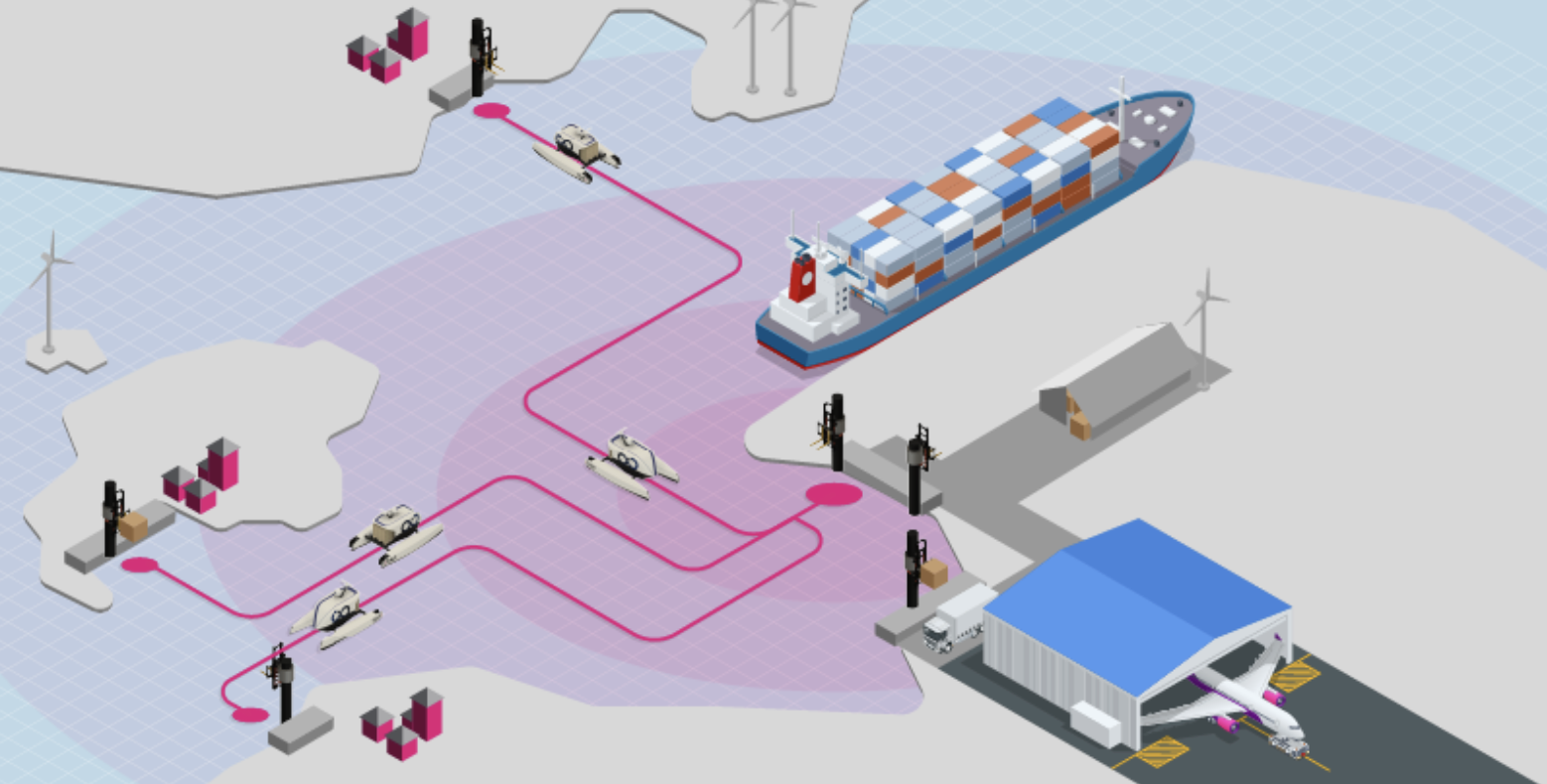
Image Credit: RAD Propulsion
Optima Yachts ⛴️ ⚡
More electrification here. With support from the Dept. of Transport, they are now moving beyond the e10 and e14 luxury electric tenders, and into water taxis.
Opening up regional water taxi services, commonplace in so many countries, feels again like an open market that we haven't capitalised on in coastal and river cities - there is an investment raise and project potential for a Solent Region service...
More on Optima Yachts.
Chartwell Marine ⛴️ ⚡
And...more electrification here! Bigger, 24m foiling electric ferry, 40 seats, 28 knots. Nice. Plenty of market again for local ferry services in the UK and beyond.
As of March 2025, they have the Foiling Fast Ferry TriFoiler Demonstrator running on Southampton Water - a £1.86m project funded via Clean Maritime Demonstration Competition Round 3 (CMDC3) and the UK SHORE (Shipping Office for Reducing Emissions) programme. UK SHORE is a Department for Transport (DfT) initiative delivered by Innovate UK / UKRI.
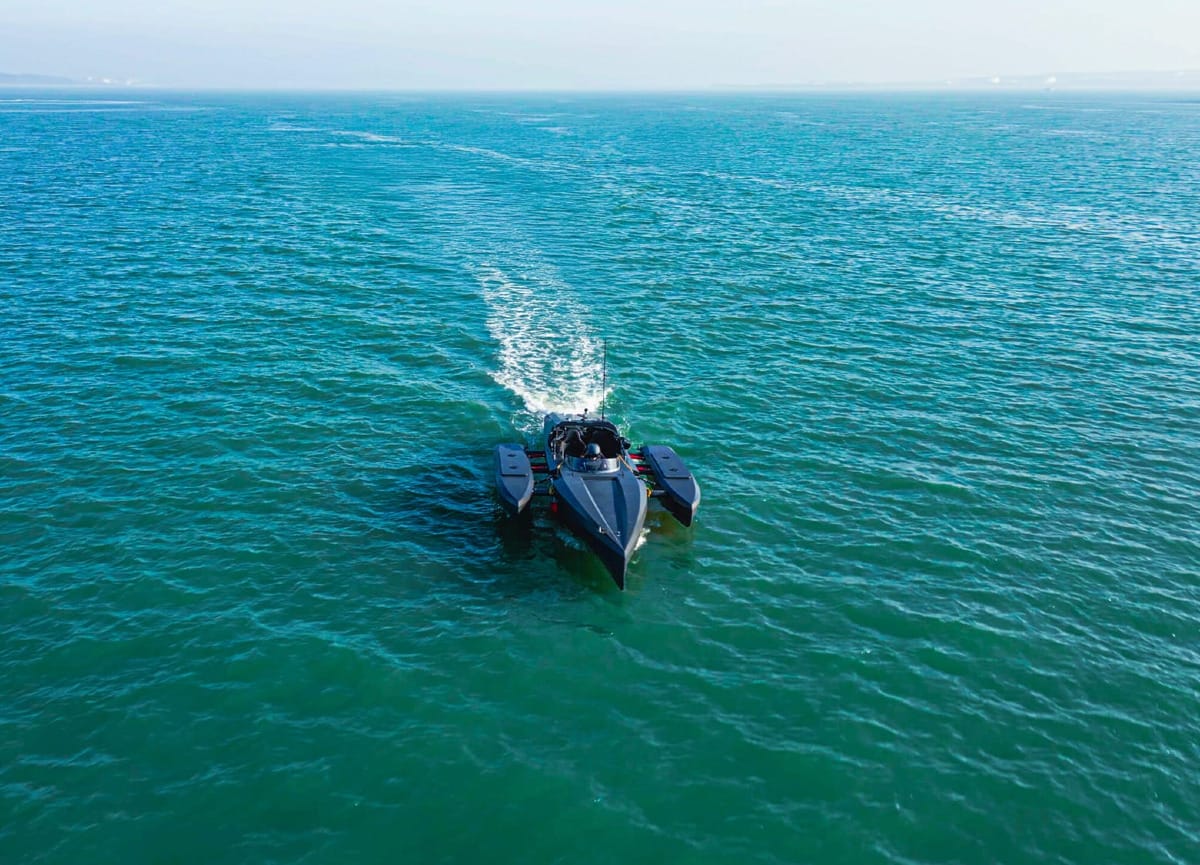
More to come from their strategic partnership with Solent University and Newcastle Marine Services as they scale up to that ferry design. With a strong background in offshore wind service vessels, there is great promise here for UK fast ferry electrification.
More on Chartwell Marine.
Online Oceans 🌐
Ocean data is critical to understanding climate change, from the UN:
The ocean generates 50% of the oxygen we need, absorbs 25% of all carbon dioxide emissions and captures 90% of the excess heat generated by these emissions. It is not just ‘the lungs of the planet’ but also its largest ‘carbon sink’ – a vital buffer against the impacts of climate change.
Quite important right now to know what's happening with continuous data capture. Online Oceans is deploying autonomous ocean robotics powered by solar that deliver real-time data from surface or subsea sensors, via acoustic harvesting - with a sale or service model option.
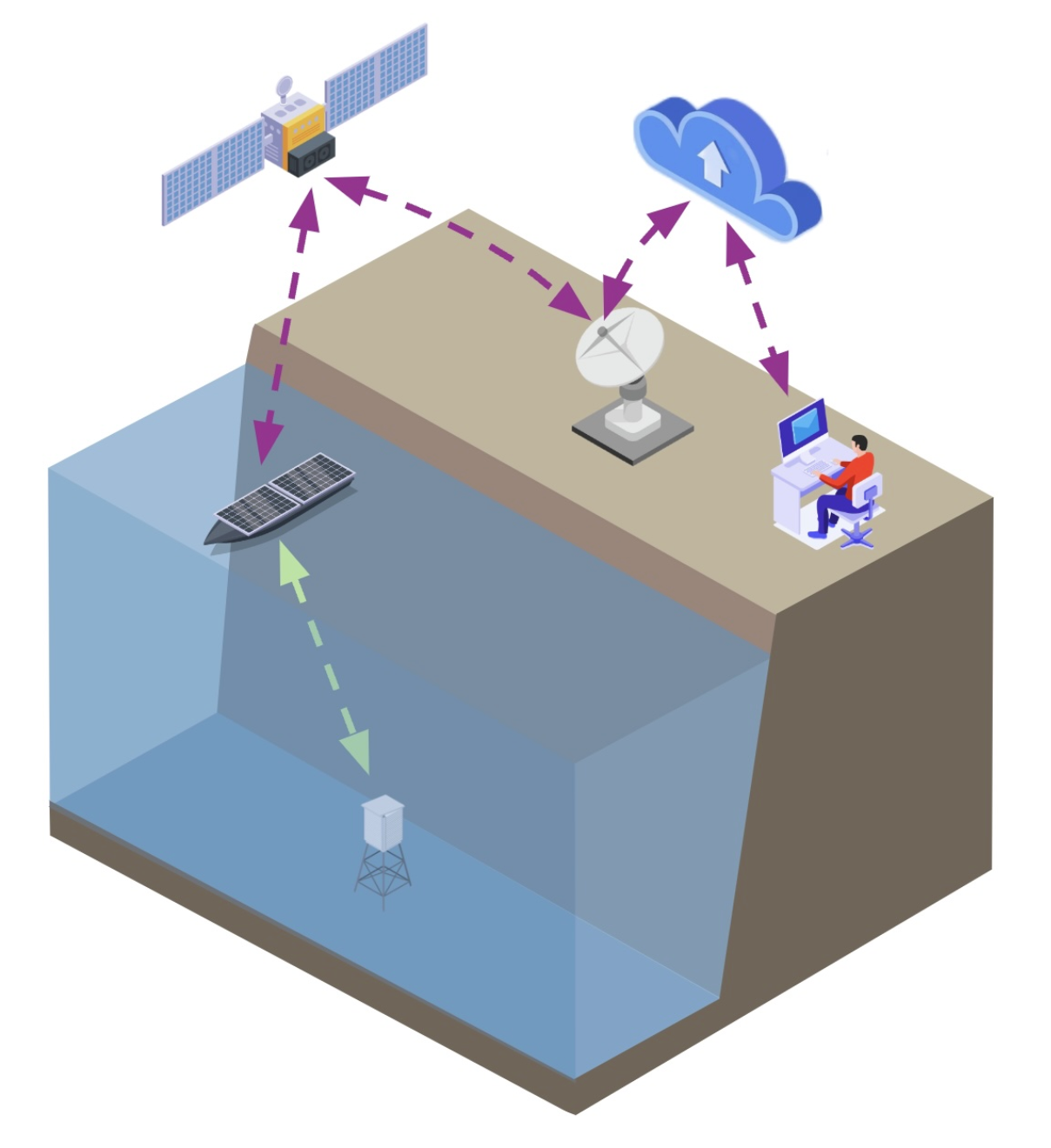
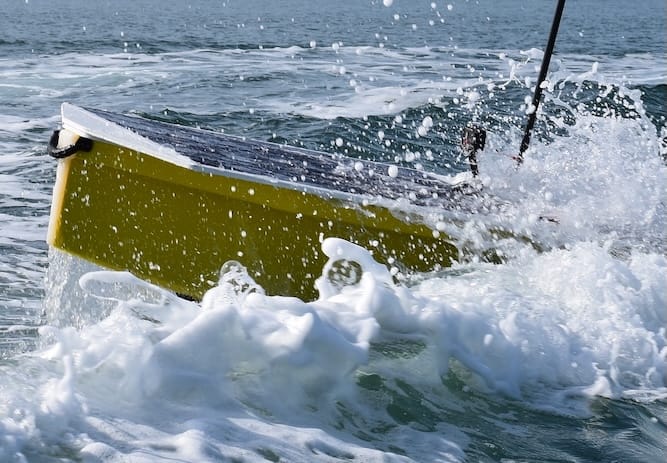
Image Credit: Online Oceans
With a team that is also part of RAD Propulsions technologies, and has founders with experience from another local innovator, Ocean Infinity, there is a good basis to deliver this innovative platform at scale for research establishments globally.
More on Online Oceans.
What Else?
Beyond our startup innovator pitches, we were also treated to some on-water demonstrator vessels for a bit of fresh air and action. 🌊 😎
A number of the panel sessions on Day 2 focused on skills development, education, engagement and how to ensure maritime secures the interest and resources of the next generation.
Great to see the 'Tech Truck' on site as a roaming learning hub, since its launch last year it's delivered STEM engagement across the Solent Region:
18,000 children and young people, adults, careers staff and employers, attending more than 100 local schools, community activities and Solent-based events
With VR, 3D printing and robotics all interactively linked it's quite the tech-fest! And now they have a new fully digital training vessel - the future looks bright for the kids. 🤖
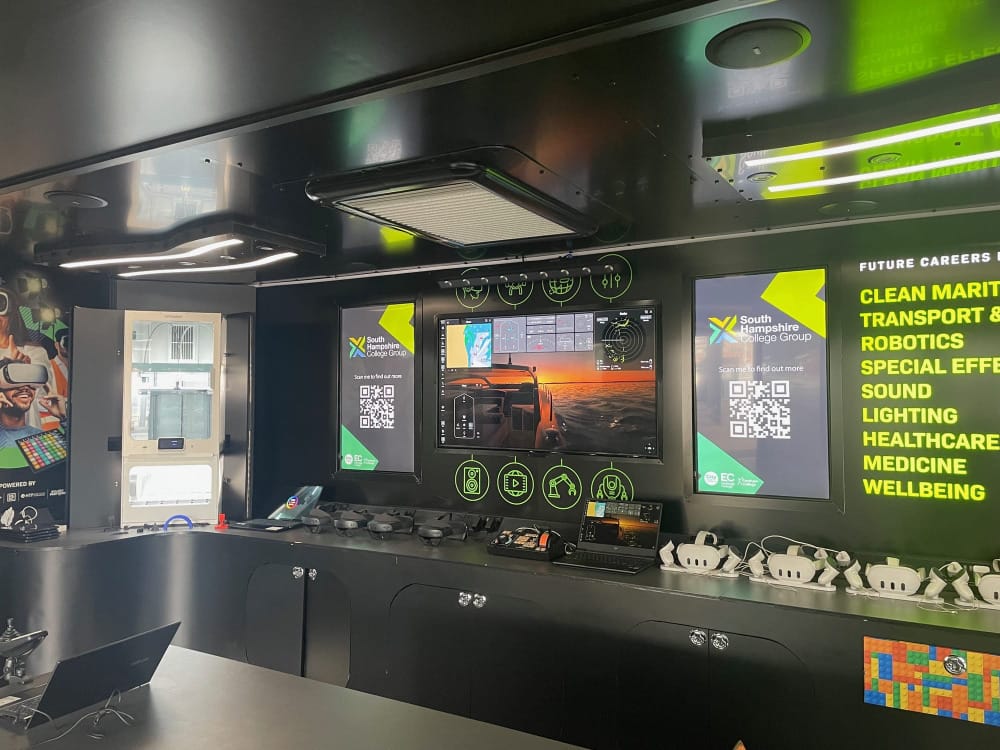
It was great to see Canada firming its ties with the UK on Maritime, Megan Wood providing the insights as the Trade Commissioner for Clean Technologies at the High Commission of Canada in London.
With all that's happening in North America right now, strengthening our collaboration and innovation efforts across renewable energy, smart grid, energy storage, zero-emission vehicles, and ocean-tech, is welcome from all parties. 🇨🇦 🇬🇧
There was further news from the University of Southampton, which is going all in on their Centre for Green Maritime Innovation, by breaking it out from under the University, to be an independent industry-led organisation to enable rapid innovation through to TRL7. 💡
Wrapping up, a fantastic two-day conference which brought together a wide range of stakeholders for the inaugural event. I'm looking forward to next year already and watching with interest as the dynamics of regional growth, innovation, and decarbonisation strategies develop in synergy.







